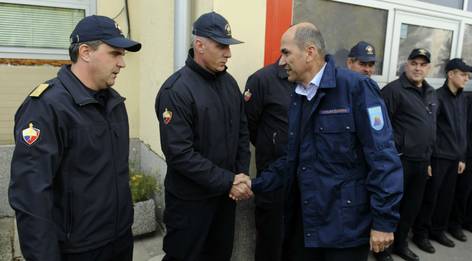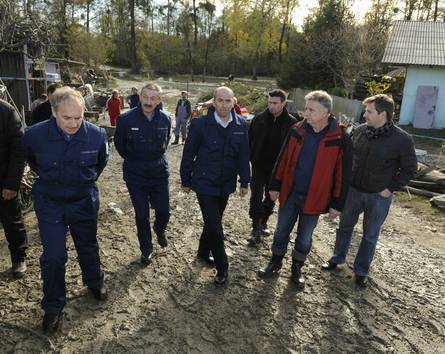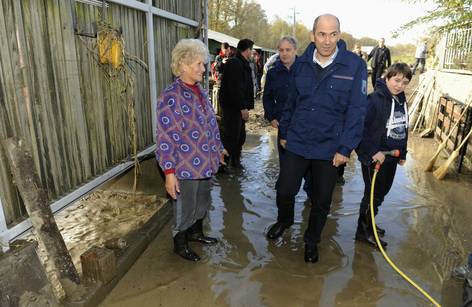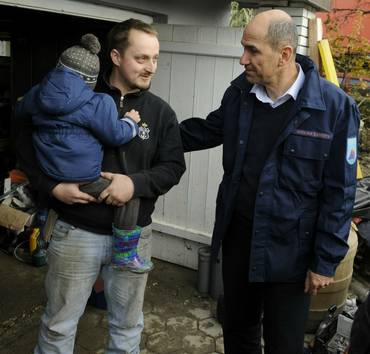NEWS
The Prime Minister of the Republic of Slovenia, Janez Janša, on his visit to the flooded areas of Styria: "The highest priority is to provide relief to those most affected by the floods before the winter sets in"
The Prime Minister of the Republic of Slovenia, Janez Janša, this morning visited the worst affected areas of Styria immediately upon his return from Laos and took note of the consequences of recent floods. Shortly after receiving the first information about the extent of this natural disaster, the Prime Minister charged the responsible ministers to prepare a rough estimate of the damage to be discussed at the government session the following day. "The damage is huge, but fortunately there are no victims," said Prime Minister Janša and added that the Government would do everything in its power to clean up and rebuild the areas affected by the disaster. To this end, the Government will also apply for assistance from the EU Solidarity Fund; however, the final assessment of the damage caused by the floods needs to be made first. The Government will also allocate part of the funds from the budget and the state reserve. The Prime Minister gave assurances that, despite the scarce budget resources, this natural disaster will be given top priority within the limits of its possibilities.
The Prime Minister first thanked everyone who swiftly stepped in to offer help in this severe natural disaster and particularly commended the firemen, civil protection, the Slovenian armed forces and the police.
He pointed out that many people affected by the disaster still required relief, particularly due to the approaching winter and since many basements and firewood stacks had been flooded or washed away.
During his visit, Prime Minister Janša, the Minister of Defence, Aleš Hojs, and the Commander of the Slovenian Civil Protection, Srečko Šestan, first met in Maribor the mayors of the flood-stricken municipalities, who briefly presented the situation and described the damage wrought by the disaster. According to the Civil Protection's most recent estimates, more than 3000 buildings and more than one hundred road sections were damaged and more than 200 landslides were triggered by the floods. Rescue operations involved 2731 people including firefighters, members of the civil protection service, police and power generation and municipal utility companies’ staff. After the talks with the mayors, the Prime Minister visited the most affected areas of Duplek municipality and Malečnik local community. He also visited some of the homes and spoke to the local residents whose homes and property had not been spared from the flood.
During his visit to the affected area, Prime Minister Janša called on insurance companies to speed up all the necessary damage assessments and make faster payouts for the insured homes and property. The competent authorities will apply for EU relief funds to compensate for the damage not covered by insurance, provided, however, that the conditions for it are met. Each EU Member State may apply for relief from the EU Solidarity Fund when the estimated damage exceeds three billion euros or 0.6% of its GDP.
In his statement to the press after the visit to the disaster area, the Prime Minister answered the question about the release of water from the dams on the Drava River in Austria. He said that the Austrian authorities claimed that the weather conditions were not the same as the forecast and that such reaction was the only possible solution. According to the Prime Minister, the International Joint Commission for the Drava River will have to establish if this wait had been too long and too much water had accumulated before the sluice gates were opened. The Prime Minister also emphasised that for the time being ‘this is only a lay view of the matter which will be investigated by the experts, but it can also be seen as an initiative to prevent something similar from occurring again in the future as objectively as possible.’











